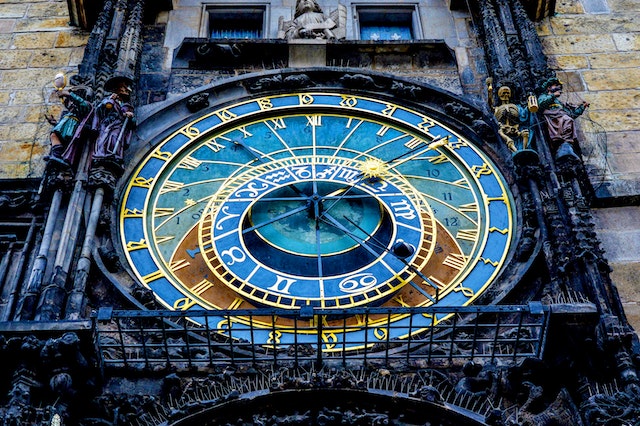
Stellar exploration has always held a deep fascination for humanity, igniting our innate curiosity about the vast and mysterious universe that envelops us. The pursuit of astronomical adventures has taken us to new heights, allowing us to uncover the secrets of distant galaxies, nebulae, and celestial bodies. In this comprehensive guide, we will dive into the captivating realm of astronomical exploration, discussing the wonders of the cosmos, the astronomical unit as our measuring stick, and the awe-inspiring experiences that await those who dare to gaze into the heavens.
Astronomical Adventures: A Journey Beyond the Stars
As we set out on our astronomical adventures, we are not merely exploring distant points of light in the night sky. We are uncovering the very origins of the universe, deciphering its history, and gaining insights into the fundamental forces that shape its evolution. These cosmic odysseys grant us the opportunity to witness breathtaking phenomena that challenge our understanding of reality itself.
The Cosmic Playground: The Vastness of the Astronomical Universe
The term “astronomical” takes on a new meaning when we consider the sheer scale of the universe. An astronomical unit, the average distance between the Earth and the Sun, serves as a fundamental yardstick for measuring distances in our solar system. But as we venture farther out into space, the numbers become staggeringly immense. Light-years, the distance light travels in a year, serve as our guideposts in exploring galaxies, stars, and cosmic wonders that are millions or billions of light-years away.
Into the Heart of Stars: Unraveling Stellar Phenomena
Stellar exploration unveils a captivating array of celestial phenomena that intrigue and mystify astronomers. Supernovae, the explosive deaths of massive stars, send shockwaves through space, releasing energy equivalent to billions of nuclear bombs. Neutron stars, remnants of supernovae, pack more mass than our Sun into a sphere the size of a city, leading to incredible gravitational effects and the formation of mesmerizing pulsars.
Cosmic Nurseries: Birthplaces of New Stars
Nebulae, often called “stellar nurseries,” are vast clouds of gas and dust where new stars are born. These cosmic cradles serve as the building blocks of galaxies, giving rise to stars of various sizes and forming planetary systems. The iconic Eagle Nebula, known for its Pillars of Creation, showcases the delicate interplay of gravity and radiation, shaping the future of countless celestial bodies.
A Dance of Worlds: Exoplanets and Planetary Exploration
The quest for astronomical adventures extends beyond stars to the exploration of exoplanets, planets orbiting distant suns. With advanced telescopes and observational techniques, astronomers have identified thousands of exoplanets, each offering unique insights into planetary formation, habitability, and the potential for life beyond Earth.
Witnessing Eclipses: Celestial Alignments in Motion
Solar and lunar eclipses exemplify the intricate dance of celestial bodies in motion. Solar eclipses captivate us as the Moon temporarily obscures the Sun, casting a mesmerizing shadow on Earth. Lunar eclipses paint the Moon in hues of red as Earth’s atmosphere scatters sunlight, offering a stunning visual spectacle that connects us to cosmic rhythms.
Peering into the Abyss: Black Holes and Gravitational Waves
Black holes, enigmatic cosmic entities, possess gravitational forces so strong that not even light can escape their grasp. The discovery of gravitational waves, ripples in the fabric of spacetime, has revolutionized our ability to study these mysterious phenomena. Through gravitational wave observatories, we can “hear” the collisions of black holes and neutron stars, opening new avenues of exploration.
Exploring the Unseen: Dark Matter and Dark Energy
Astronomical adventures extend into the unseen realms of dark matter and dark energy, which together constitute the majority of the universe’s content. Dark matter, with its invisible gravitational influence, shapes the formation of galaxies and galaxy clusters. Dark energy, on the other hand, drives the accelerated expansion of the universe, a profound discovery that challenges our understanding of fundamental physics.
Final Words
As we conclude this journey through the cosmos, it’s clear that stellar exploration has evolved from a mere scientific pursuit into a grand adventure that fuels our imagination and drives technological innovation. Every observation, discovery, and cosmic revelation brings us closer to understanding our place in the universe and the boundless wonders it holds.
Commonly Asked Questions
Q1: Can I Witness Stellar Events Without a Telescope?
A1: Absolutely! Many celestial events, such as meteor showers and lunar eclipses, can be observed with the naked eye. A clear night sky and some patience are all you need.
Q2: How Do Astronomers Measure Distances in Space?
A2: Astronomers use various methods, including parallax and Cepheid variable stars, to measure distances within our galaxy and beyond. These techniques help create a cosmic distance ladder.
Q3: What Makes Exoplanet Discoveries So Exciting?
A3: Exoplanets offer a glimpse into the diversity of planetary systems and the potential for habitable worlds. Studying their atmospheres can provide clues about the presence of life.
Q4: What Are Gravitational Waves, and How Are They Detected?
A4: Gravitational waves are ripples in spacetime caused by massive cosmic events, such as black hole mergers. Advanced detectors like LIGO and Virgo help us “see” these waves by measuring minuscule changes in distance.
Q5: Why Is Dark Matter Called “Dark”?
A5: Dark matter doesn’t emit, absorb, or reflect light, making it invisible to conventional observation methods. Its presence is inferred from its gravitational effects on visible matter and light.












